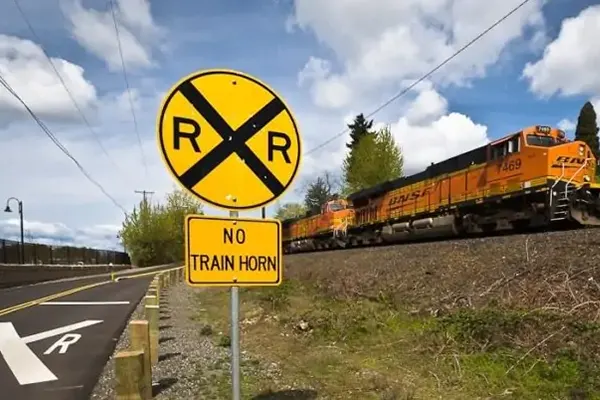
10 Safety Tips for Truck Drivers at Railroad Crossings
New truck drivers have a lot to learn about driving a truck, since trucks are very different from cars. Each year there are thousands of collisions between trains and vehicles, and these collisions may result in injuries and deaths. SAGE Truck Driving Schools teach some basic rules about trucks at railroad crossings.
Here are some important safety tips for truck drivers when crossing a railroad track:
- It can take the average freight train traveling at 55 mph a mile or more to stop.
- At crossings, don’t stop any closer than 15 feet. If you’re in traffic, don’t go forward if you can’t safely clear the crossing.
- Make sure that trailer jacks (landing gear) are in the up position; non-retracted trailer jacks can cause trailers to become stuck on crossings.
- Approach tracks cautiously, and always expect a train, even on rarely used tracks. Be cautious any time, day or night, since trains do not usually travel on a regular schedule.
- Turn on your four-way flashers to warn other drivers that you are slowing down.
- Turn off any fans and music, and roll your windows down as you come to the track so you can hear well.
- Once you are stopped, carefully listen for a train. Look both ways down the track. Be watchful of your mirrors, cab, or anything that may block your view. Look twice before proceeding.
- If you see a train, understand that it is closer and moving faster than you think. Always wait for it to pass before proceeding across the tracks.
- If you are crossing the tracks and you see a train coming, keep going. Do not panic and stop on the tracks. Remember, the train is at least three feet wider than the tracks on each side.
- If you get stuck at the crossing, immediately get out and call the 800 number posted at the crossing, or call local police to alert trains of your position.
What should a truck driver do if there’s no 800 number posted at the railroad crossing when they get stuck?
- If there’s no 800 number posted at the railroad crossing and a truck driver gets stuck, the first action should be to call local emergency services or the police immediately. They have the means to contact the railroad company directly and can take swift action to prevent an accident. The key is to communicate the situation as quickly as possible to authorities who can alert the railroad operators.
How can truck drivers accurately judge if they can safely clear the crossing in traffic situations?
- Truck drivers can use several strategies to judge if they can safely clear the crossing:
- Know your truck’s length and the crossing width: Being familiar with the dimensions of your vehicle helps in making accurate judgments.
- Wait until there’s ample space on the other side: Ensure there’s enough room for your entire truck (including the trailer) on the other side of the tracks before proceeding.
- Anticipate traffic flow: Watch the traffic beyond the crossing to anticipate any potential stops that could trap you on the tracks.
- Use mirrors and cameras: Utilize all available mirrors and any camera systems to monitor traffic conditions around the truck and the crossing.
- Practice patience: When in doubt, it’s safer to wait until you’re sure you can fully clear the crossing without stopping.
Are there specific techniques or strategies for truck drivers to enhance their ability to hear or see an approaching train, especially in adverse weather conditions?
- In adverse weather conditions, enhancing auditory and visual awareness is crucial:
- Increase vigilance: Pay extra attention to visual cues, such as flashing lights at the crossing, which can indicate an approaching train.
- Use technology: Modern trucks may be equipped with technology that can assist in detecting sounds or obstacles, which can be particularly useful in poor visibility.
- Slow down: Reducing speed in adverse conditions allows for more reaction time and reduces the risk of getting stuck on the tracks.
- Maintain clear windows and mirrors: Ensure that windows, mirrors, and cameras are clear of obstructions like snow, ice, or fog before approaching a crossing.
- Consult weather reports: Being aware of weather conditions ahead of time can help drivers prepare for potential visibility and hearing challenges.
Disclaimer: The information in this article is based on the data available as of its writing and is meant to inform and guide prospective CDL trainees. For the most current information and specifics about CDL training programs, please contact SAGE Truck Driving Schools directly.
Please fill out the information below and our team will reach out to chat about your options.


